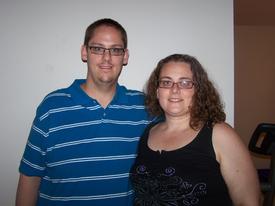We are pleased to announce that as of March 4, 2025, an updated Rich Text Editor has been introduced in the MyFitnessPal Community. To learn more about the changes, please click here. We look forward to sharing this new feature with you!
CRAMP while exercising :(

workoutqueen628
Posts: 220
For the past week, I have gotten a cramp/side stitch while exercising! It is very frustrating! I usually workout around 6 pm (because this is the only free time i have) and I eat a snack at around 4 pm. 2 hours should be enough time for my food to digest! I have tried eating different things for snack- a protein bar, yogurt, fruit, bread, and it seems like I still get a cramp no matter what i eat. I do have a sensitive stomach and I run at my best on a completely empty stomach, but I don't want to skip my snack- then I would go like 4-5 hrs. without eating. What is the recommended food to eat before a workout? Anyone else have this problem?
0
Replies
-
I workout at the same time 6-7pm and I get a toe cramp at least 3 times a week out of a 6 day workout. Sometimes it is so painful I have to stop for a minute and take my shoe off. I have made sure to drink water throughout the day, banana each morning etc. Sorry I don't have the anwser, just want to share the same problem0
-
I always ate oatmeal before a run... May not be very practical for an afternoon snack, but it could be done.
Other people I know would eat toast w/peanut butter.0 -
drink more water and eat more potassium0
-
I've heard this can be a problem with breathing.0
-
Cramping happens when your body uses up the glycogen reserves stored in your muscles. When you eat carbs, it replenishes the glycogen. When the glycogen runs out, your body produces lactic acid which causes a burning sensation and cramping.
Make sure you have eaten some complex carbs before working out.0 -
What Causes a Side Stitch?
The pain is caused by a spasm of the diaphragm muscle. The diaphragm is a dome shaped muscle that separates the thoracic (lung) cavity from the abdominal cavity and moves up and down when you inhale and exhale. To understand why the diaphragm muscle spasms, we need to understand what is happening during exercise: Let's use the sport of running as an example.
It is interesting to note that more than 70% of humans exhale when their left foot strikes the ground, while less than 30% exhale when their right foot hits the ground.
When you inhale, your lungs fill with air and force your diaphragm downward. Conversely, when you exhale your lungs contract and your diaphragm rises. This pattern of rising and falling occurs quite rapidly when you're running and as most side stitches occur on the right hand side, consider what happens to your diaphragm when your right foot strikes the ground.
As your right foot strikes the ground, gravity forces your internal organs downward. Some of these organs are attached to the diaphragm, which in turn pulls the diaphragm downward. Now if you're also exhaling at the same time as your right foot hits the ground, your diaphragm is being pulled upward as your lungs contract. This creates a stretching of the diaphragm muscle and the ligaments that are attached to your internal organs, which inturn causes the pain.
Treating a Side Stitch
Like any other muscle spasm, when a side stitch occurs it is important to stop the activity that brought the stitch on in the first place, or at the very least reduce the intensity of the activity.
Another effective treatment for a side stitch is to alter your breathing pattern. First concentrate on taking full, deep breathes and avoid shallow breathing. Then, if you are one of those people who exhale when your right foot hits the ground, try instead to exhale when your left foot hits the ground.
Preventing a Side Stitch
There are a number of measures that help to prevent side stitch, the main ones being:
* Improve your cardiovascular fitness;
* Concentrate on breathing deeply during exercise;
* Warm up properly before exercising;
* Gradually increase exercise intensity;
* Avoid eating before exercising;
* Drink more fluids;
* Strengthen your core muscles (lower back, abdominal and oblique muscles); and
* Stretch more, especially your lower back and abdominal muscles.0 -
I get a side stitch when working out too, and I've found it's when I'm not taking deep breaths. When you get one, take 30 seconds to do some deep breathing. Your stomach should puff out when you take a deep breath. I've found that always cures my side stitch.0
-
Cramping happens when your body uses up the glycogen reserves stored in your muscles. When you eat carbs, it replenishes the glycogen. When the glycogen runs out, your body produces lactic acid which causes a burning sensation and cramping.
Make sure you have eaten some complex carbs before working out.
This is very interesting. Yesterday I did not have my usual afternoon snack, so by the time I I did my workout it had been about 3-4 hours since my last meal. I was fine during the first 30 minutes on the elliptical, but during the second 30 minutes on the treadmill I experienced some cramping. It is very possible that my stored glycogen had been used up.
Thanks for your input.0 -
I've heard this can be a problem with breathing.
I notice this when I am running and get so exherted I start taking shallow breathes, its either this or needing water0
This discussion has been closed.
Categories
- All Categories
- 1.4M Health, Wellness and Goals
- 394.5K Introduce Yourself
- 44K Getting Started
- 260.5K Health and Weight Loss
- 176.1K Food and Nutrition
- 47.5K Recipes
- 232.7K Fitness and Exercise
- 444 Sleep, Mindfulness and Overall Wellness
- 6.5K Goal: Maintaining Weight
- 8.6K Goal: Gaining Weight and Body Building
- 153.1K Motivation and Support
- 8.1K Challenges
- 1.3K Debate Club
- 96.4K Chit-Chat
- 2.5K Fun and Games
- 4K MyFitnessPal Information
- 16 News and Announcements
- 1.3K Feature Suggestions and Ideas
- 2.8K MyFitnessPal Tech Support Questions







